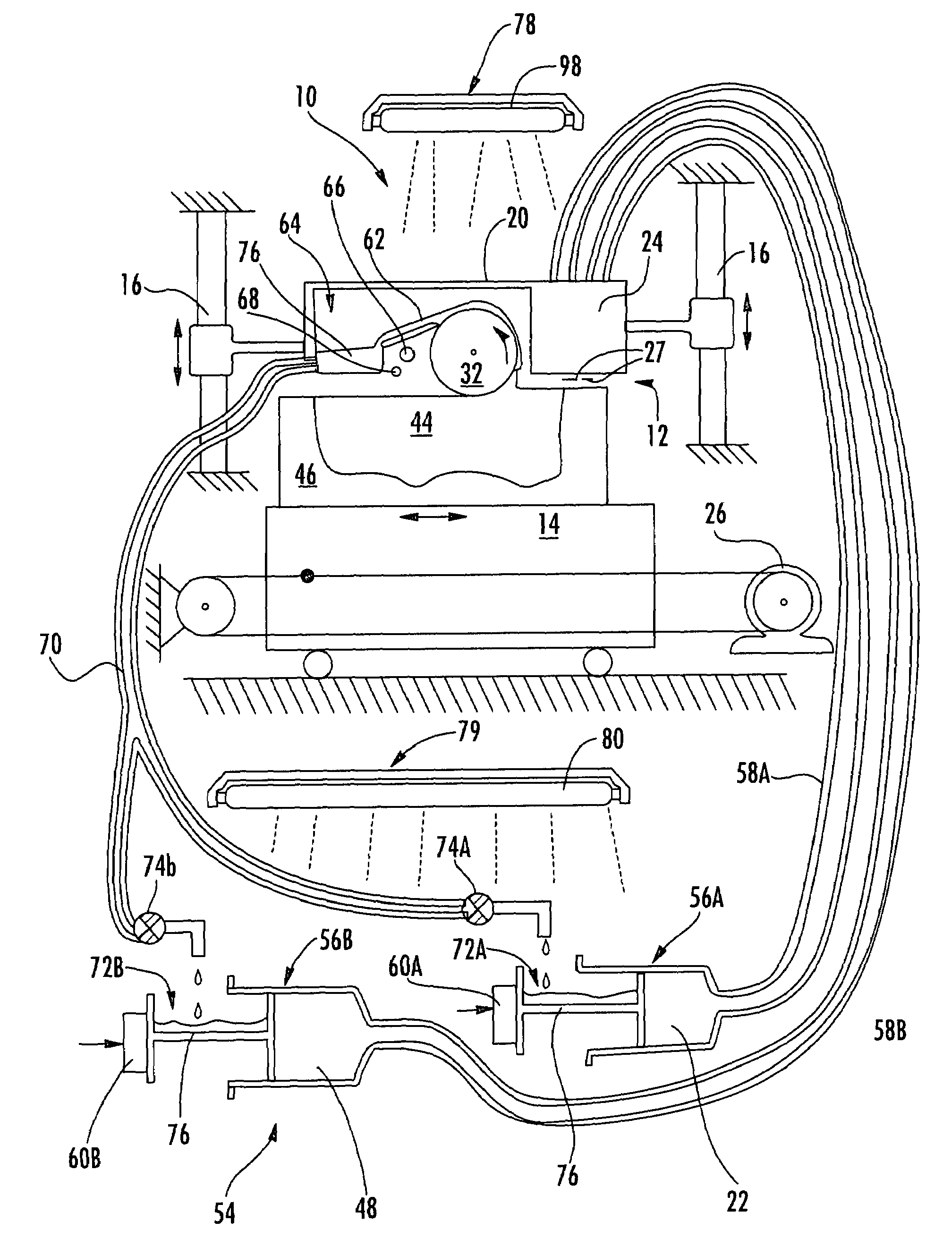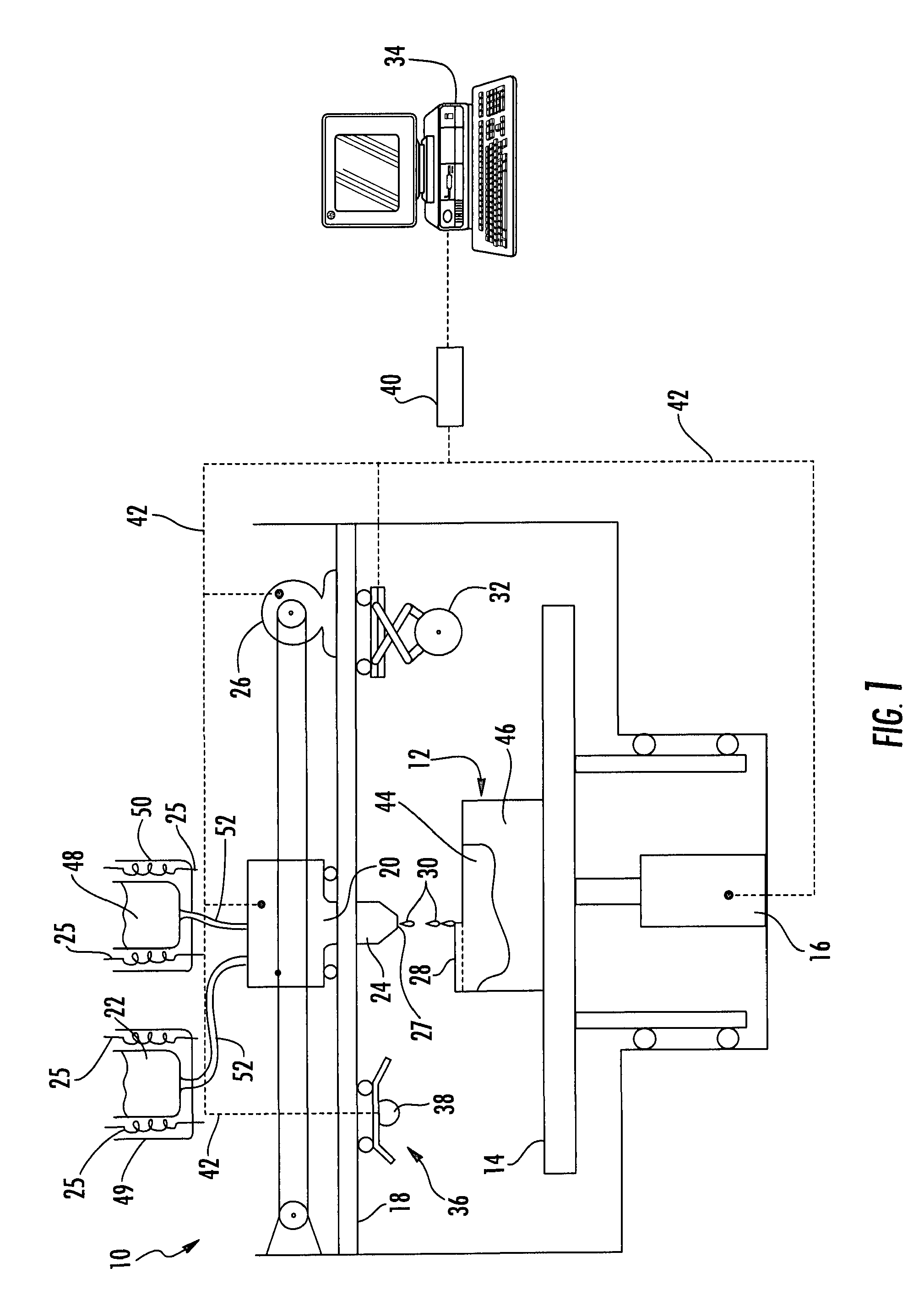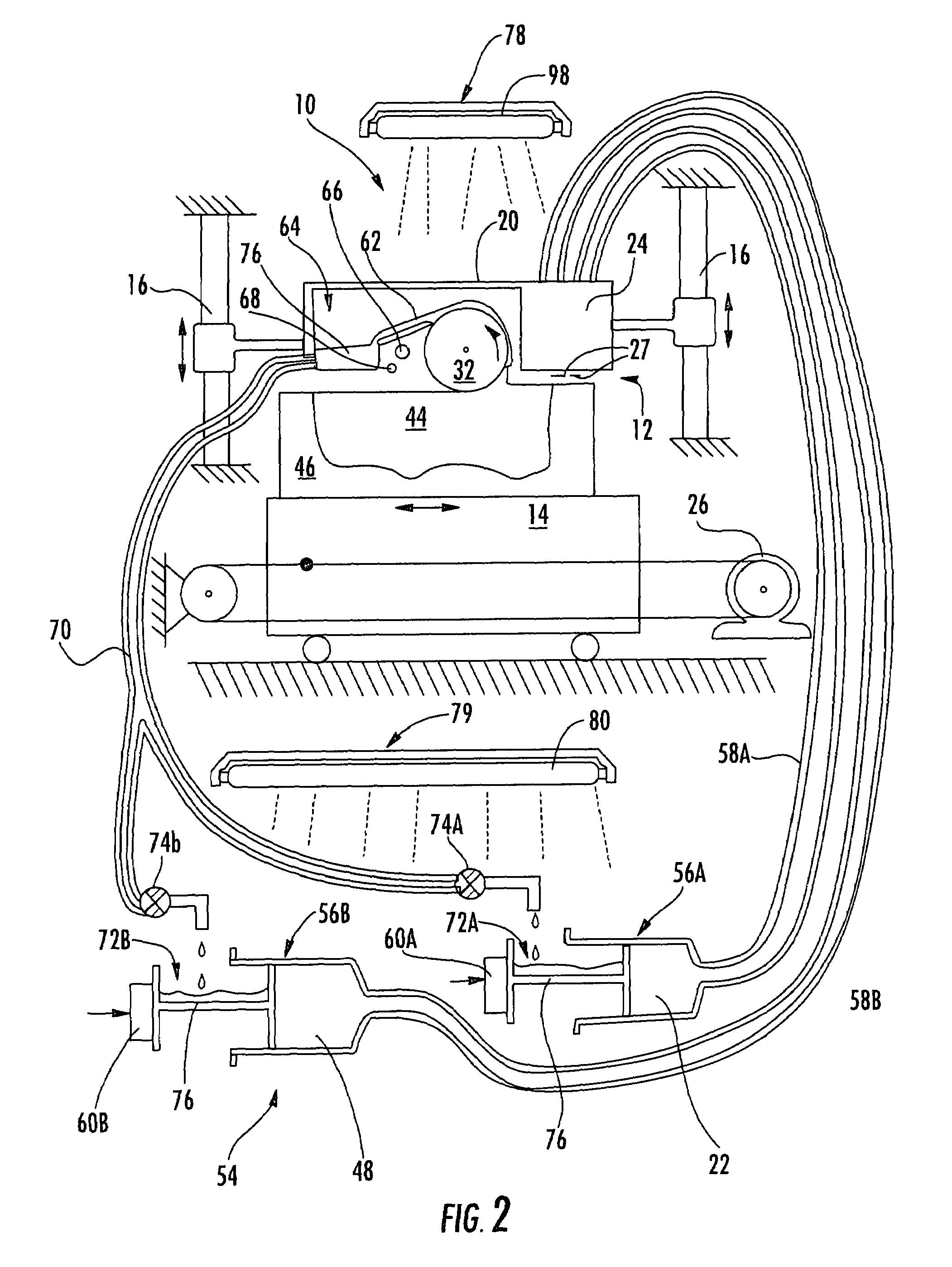Flash curing in selective deposition modeling
a selective deposition and curing technology, applied in the field of solid deposition modeling, can solve the problems of reducing the efficiency of curing in these materials, unable to effectively initiate curing of free radicals, and unable to effectively inhibit oxygen in the atmosphere, so as to achieve the effect of substantially reducing power consumption and heat generation
- Summary
- Abstract
- Description
- Claims
- Application Information
AI Technical Summary
Benefits of technology
Problems solved by technology
Method used
Image
Examples
Embodiment Construction
[0031]While the flash curing system of the present invention is applicable to all SFF techniques that could utilize in using a planar flash curing system to cure a build material, the invention will be described with respect to an SDM technique utilizing an ink jet print head dispensing a ultraviolet radiation curable phase change material. However, it is to be appreciated that the present invention flash curing system can be implemented with any SFF technique utilizing a wide variety of curable materials. For example, the curable material can be cured by exposure to radiation having wavelengths other than in the ultraviolet band of the spectrum, if desired.
[0032]As used herein, the term “a flowable state” of a build material is a state wherein the material is unable to resist shear stresses that are induced by a dispensing device, such as those induced by an ink jet print head when dispensing the material, causing the material to move or flow. Preferably, the flowable state of the ...
PUM
| Property | Measurement | Unit |
|---|---|---|
| average power consumption | aaaaa | aaaaa |
| wavelengths | aaaaa | aaaaa |
| area | aaaaa | aaaaa |
Abstract
Description
Claims
Application Information
 Login to View More
Login to View More - R&D
- Intellectual Property
- Life Sciences
- Materials
- Tech Scout
- Unparalleled Data Quality
- Higher Quality Content
- 60% Fewer Hallucinations
Browse by: Latest US Patents, China's latest patents, Technical Efficacy Thesaurus, Application Domain, Technology Topic, Popular Technical Reports.
© 2025 PatSnap. All rights reserved.Legal|Privacy policy|Modern Slavery Act Transparency Statement|Sitemap|About US| Contact US: help@patsnap.com



